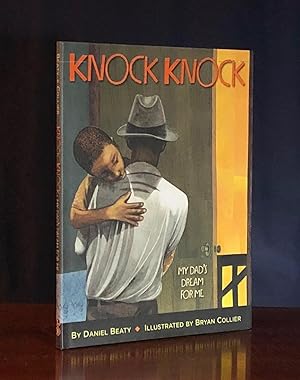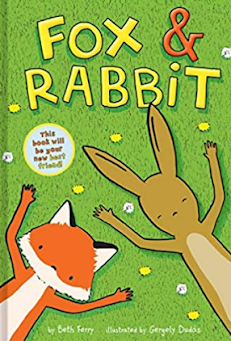Picture Books
This week, we're also looking at Picture Books. Here are four more assessments and recommendations.
Knockl Knock: My Dad's Dream for Me
Knock Knock is the powerful story told from the child's perspective of the loss of a loving father. Throughout the book, colors are muted and dark, echoing the heartbreak of the young boy. The illustrations have texture to add to the realism, such as the wrinkles in the father's shirt. Two primary illustrated metaphors move through the book - a paper airplane representing the child's reaching for this father through a letter and the father's hat, representing his presence and the memory of him. As the boy receives a letter from his father, he slowly grows into his own hat and life, following the words and advice of the letter. With 60-70% of African-American/Black families being single parent households, this book takes on some of the difficult emotions faced by the child in these situations.
With rich color, We are Water Protectors brings the read into the book, rolling with the waves and the current of the river. In this book, a black snake threatens the land's precious water and becomes an entity against which the human community must bond together to protest. While not stating overtly, the references to the Keystone Oil Pipeline and the devestating effects of a spill on the environment are clear. The representations of the tribes and their beliefs in their role to protect the water are modern depictions. The illustrations demonstrate the integration and important of water into the lives of the people and the relationship in the ecosystem.
Lindstrom, Carole. 2020. We Are Water Protectors. Illustrated edition. Roaring Brook Press.
Alma and How She Got her Name
As names become more and more varied and expanded, a book about how and why children's names are chose and why is a welcoming addition to children's literature. Alma, a girl wearing bright red stripes in a world of muted colors, asks about the origin of her name and why it is so long. Each page tells of part of her name and her family history. Her past is represented in monochrome but as each story is told, Alma leans into the past and engages with that aspect of her name, bringing her color and life into the past and building relationships with her history.
By the end of the book, Alma understands the history of her name and how aspects of her personality come from her history. The text is brief and clear, easy to understand for a younger audience. Alma's names represent a rich culture and pride in family history.
Martinez-Neal, Juana. 2018. Alma and How She Got Her Name. Candlewick Press.
Big Red Lollipop









Nice selections and thoughtful commentary.
ReplyDelete